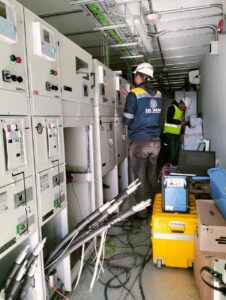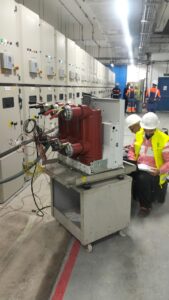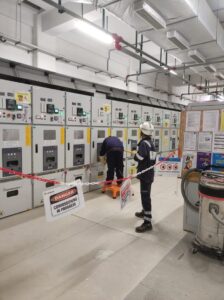In an era where sustainability is not just a buzzword but a pressing global priority, industries across the spectrum are exploring innovative ways to reduce their environmental impact. Electrical engineering, a field integral to modern infrastructure, is no exception. The advent of Artificial Intelligence (AI) has opened new horizons, offering transformative solutions that not only enhance efficiency but also pave the way for a more sustainable future.
The Role of AI in Electrical Engineering
Artificial Intelligence, with its capacity for data processing, pattern recognition, and predictive analytics, is revolutionizing electrical engineering in several key areas:
- Smart Grids and Energy ManagementTraditional electrical grids are being upgraded to smart grids, which are more efficient, reliable, and adaptable. AI plays a crucial role in this transformation by enabling real-time monitoring, predictive maintenance, and demand response. AI algorithms analyze vast amounts of data from sensors distributed across the grid to optimize energy distribution, predict failures, and reduce downtime. This not only ensures a stable power supply but also minimizes energy wastage, contributing to overall sustainability.
- Renewable Energy IntegrationThe integration of renewable energy sources, such as solar and wind, into the power grid presents significant challenges due to their intermittent nature. AI helps to overcome these challenges by forecasting energy production and demand with greater accuracy. Machine learning models analyze weather patterns, historical data, and real-time inputs to predict when and where renewable energy will be available. This allows for better coordination between energy supply and demand, reducing reliance on fossil fuels and enhancing the viability of renewables.
- Predictive Maintenance and Asset ManagementElectrical systems and equipment are subject to wear and tear, which can lead to inefficiencies and unexpected failures. AI-driven predictive maintenance models monitor the health of electrical components by analyzing operational data and identifying patterns indicative of potential failures. By predicting issues before they occur, these models help prevent costly downtime and reduce the environmental impact associated with emergency repairs and replacements. This proactive approach to maintenance extends the lifespan of equipment and optimizes resource use.
- Energy Efficiency in BuildingsBuildings are significant consumers of energy, and AI is playing a pivotal role in making them more energy-efficient. AI-driven building management systems monitor and control HVAC, lighting, and other electrical systems to minimize energy consumption without compromising comfort. These systems learn from occupants’ behaviors and preferences, adjusting settings in real time to ensure optimal energy use. As a result, AI not only lowers operational costs but also reduces the carbon footprint of buildings.
- Electric Vehicles and Charging InfrastructureThe rise of electric vehicles (EVs) is a critical component of the transition to sustainable transportation. AI is essential in optimizing the charging infrastructure needed to support widespread EV adoption. AI algorithms manage the distribution of electricity to charging stations, ensuring that they are used efficiently and that energy demand does not exceed supply. Moreover, AI helps to optimize the placement of new charging stations based on factors like traffic patterns, energy availability, and user demand, making EVs more convenient and accessible.
Challenges and Future Prospects
While the benefits of AI in electrical engineering are clear, there are challenges that must be addressed to fully realize its potential. Data privacy and security are paramount, as the increasing digitization of electrical systems creates new vulnerabilities. Additionally, the development and deployment of AI models require significant expertise and resources, which may be a barrier for smaller organizations.
Looking ahead, the continued integration of AI into electrical engineering promises even greater advancements. As AI models become more sophisticated, they will be able to handle more complex tasks, further improving efficiency and sustainability. The ongoing development of AI-driven innovations will also likely spur the creation of new technologies and business models, reshaping the electrical engineering landscape.
Conclusion
AI-driven innovations are revolutionizing electrical engineering, offering powerful tools to enhance efficiency, integrate renewable energy, and reduce environmental impact. By harnessing the potential of AI, the electrical engineering industry is not only improving its own sustainability but also contributing to a greener, more sustainable world. As these technologies continue to evolve, they will play an increasingly vital role in addressing the global challenges of energy management and environmental conservation.





